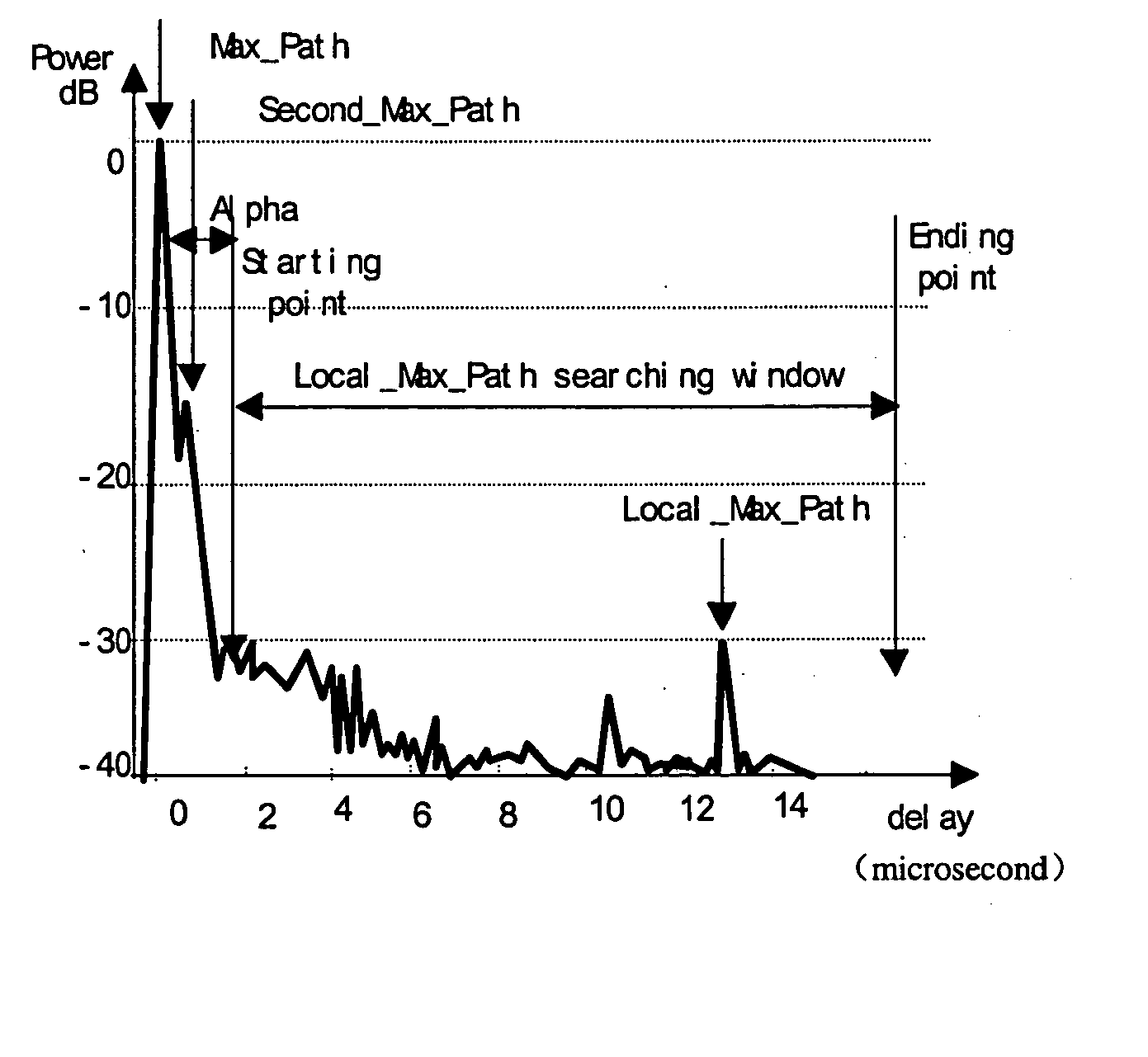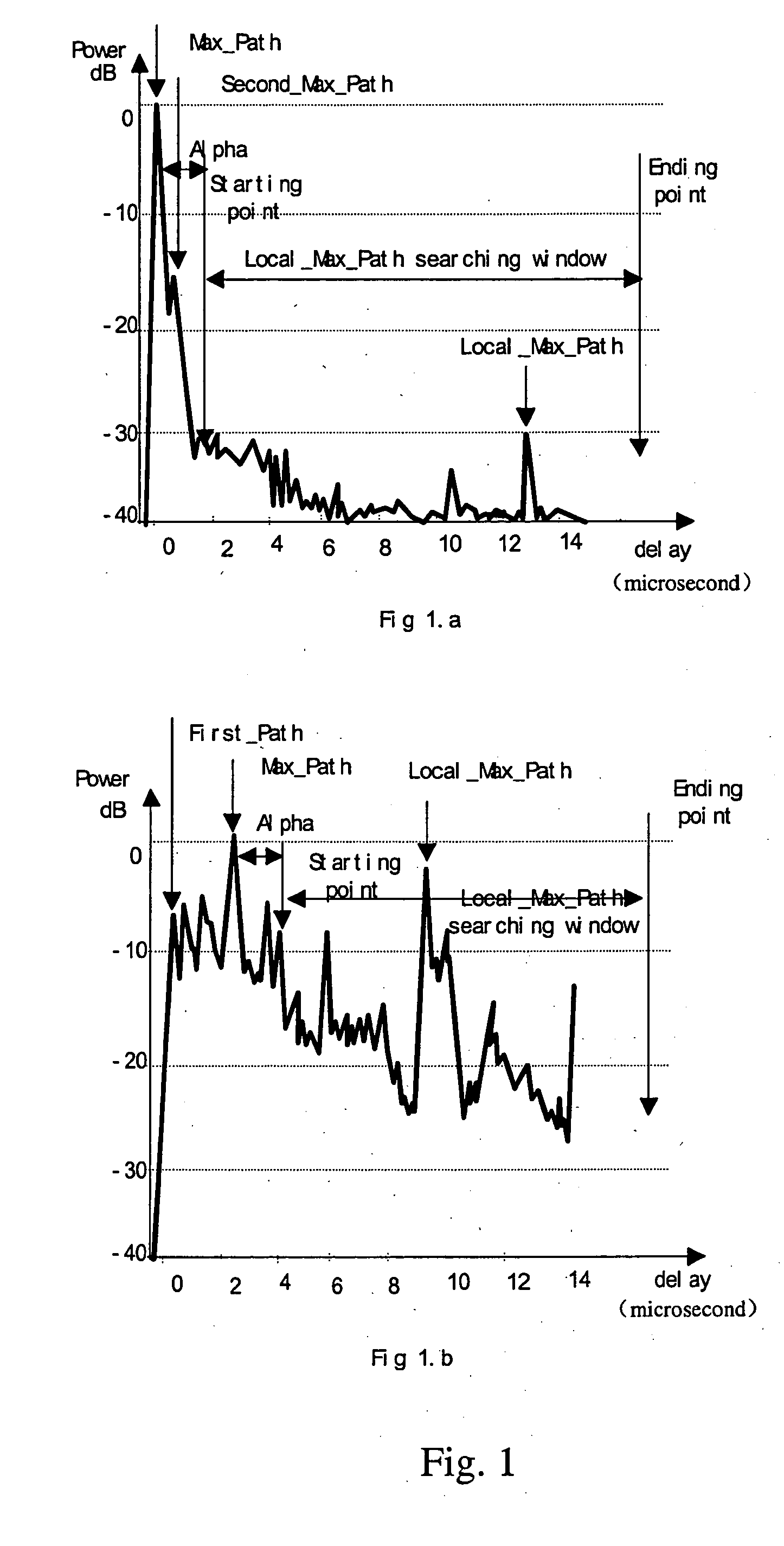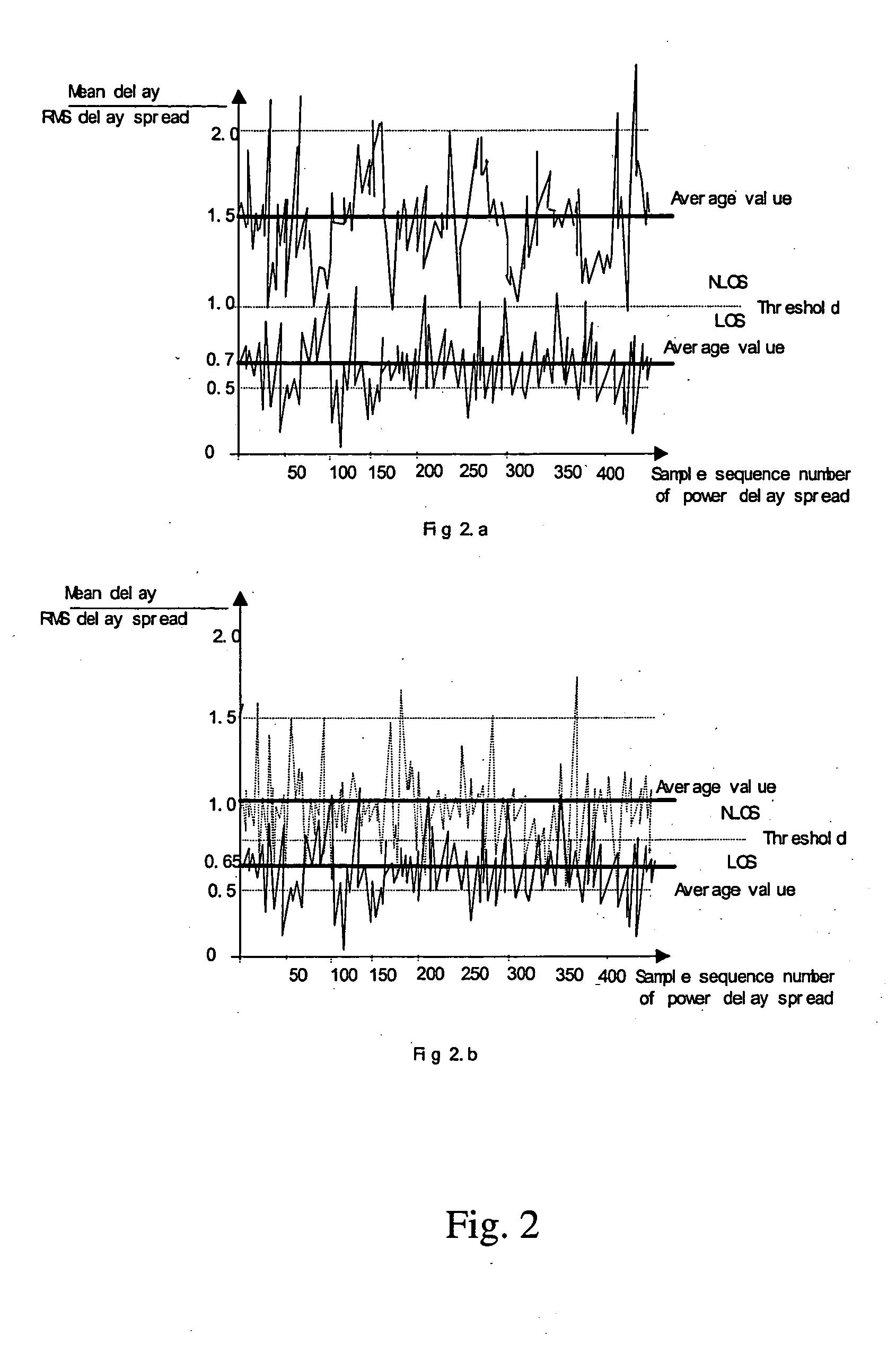Method distinguishing line of sight (los) from non-line of sight (nlos) in cdma mobile communication system
a mobile communication system and line of sight technology, applied in the field of mobile communication technology, can solve the problems of difficult to meet the response time requirement of the fcc, long delay, and relatively complex implementation, and achieve the effect of increasing the positioning accuracy of mobile stations
- Summary
- Abstract
- Description
- Claims
- Application Information
AI Technical Summary
Benefits of technology
Problems solved by technology
Method used
Image
Examples
Embodiment Construction
[0044] The invention will be described in more detail with reference to the drawings.
[0045]FIG. 1 shows the power difference of a LOS path and a NLOS path on a same power delay profile. The abscissa is the relative delay with microsecond as a unit; the ordinate is the power with dB as a unit. In FIG. 1, the First_Path is the first path, the Max_Path is the maximum power amplitude path and the Second_Max_Path is the second power amplitude path; the Alpha (α) is an interval width and the Local_Max_Path is the local maximum power amplitude path; the searching window for the Local_Max_Path is from the starting point to the ending point.
[0046]FIG. 1a is a typical power delay profile of a LOS channel after having been processed with coherent accumulation and non-coherent accumulation; FIG. 1b is a typical power delay profile of a NLOS channel after having been processed with coherent accumulation and non-coherent accumulation.
[0047] As shown in FIG. 1a, the characteristics of a LOS cha...
PUM
 Login to View More
Login to View More Abstract
Description
Claims
Application Information
 Login to View More
Login to View More - R&D
- Intellectual Property
- Life Sciences
- Materials
- Tech Scout
- Unparalleled Data Quality
- Higher Quality Content
- 60% Fewer Hallucinations
Browse by: Latest US Patents, China's latest patents, Technical Efficacy Thesaurus, Application Domain, Technology Topic, Popular Technical Reports.
© 2025 PatSnap. All rights reserved.Legal|Privacy policy|Modern Slavery Act Transparency Statement|Sitemap|About US| Contact US: help@patsnap.com



